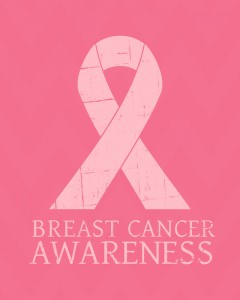 Even though breast cancer affects fewer people every year, and kills less than ever before, the disease remains one of women’s biggest health concerns. However, there are some habits and practices that can help prevent the disease, as explained by Margaret I. Cuomo, MD, author of A World without Cancer: The Making of a New Cure and the Real Promise of Prevention. The author discusses ten tips on how do reduce the risk.
Even though breast cancer affects fewer people every year, and kills less than ever before, the disease remains one of women’s biggest health concerns. However, there are some habits and practices that can help prevent the disease, as explained by Margaret I. Cuomo, MD, author of A World without Cancer: The Making of a New Cure and the Real Promise of Prevention. The author discusses ten tips on how do reduce the risk.
“Cancer is not an inevitability. Women have more control over the disease than they think,” Cuomo said in a Today Health news release. “Everything we do from the moment we wake – from what we eat and drink to whether or not we exercise and avoid BPA, parabens, and other carcinogenic chemicals–is a factor that can turn on or off the genetic switches in our bodies, including ones that could lead to cancer. The risk of many cancers, including breast cancer, can be significantly reduced by living a healthy lifestyle.”
Breast Physiology
First of all it is important for women to know how dense their breasts are, since having high density increases the risk of breast cancer by six times. Moreover, having more tissue than fat in the breasts makes it more difficult for cancer to be detected on a mammogram. That happens because both tumors and breast tissue appear to be white on the exam, while fat show up dark. Women should ask their radiologist or physician, since even though it can’t be changed, it can allow women to remain alert.
Exercise
Making exercise is also a good way of preventing breast cancer as it helps with weight control, which influences the production of estrogen, specially among post-menopausal women. Exercise also alters estrogen metabolism along with the proportion between good and bad estrogen. Women who walk between 1¼ to 2½ hours per week have an 18% less risk of suffering breast cancer than inactive women, according to the Women’s Health Initiative.
Family History
Another advice for women is to search their family cancer history, not only their mother’s, but also their father’s. Approximately 5 to 10 percent of breast cancers are hereditary and men can also carry aberrant genes such as BRCA1 and 2, responsible for an increased risk not only of suffering from breast cancer, but also, pancreatic cancer, ovarian cancer (in women) and early prostate and testicular cancer (in men).
“Genetics is a very complicated topic, and genetic counselors can not only provide you with the most accurate, up-to-date information regarding your risk but also help you decide whether or not genetic testing is right for you,” Sue Friedman, founder and director of Facing Our Risk of Cancer Empowered (FORCE), a national support network for people at high risk of breast and ovarian cancers, said. “Then, if it is, they can also help you really understand your test results and your options based on them.”
Radiation
Even though mammograms are essential to prevent and detect the disease, the radiation imposed by screening tests is one of the risk factors for the disease, since it can cause mutations in the cell’s DNA. It doesn’t mean that women should not do mammograms, it only means its use should be rational. “Mammograms deliver very small doses of radiation, and if you follow general guidelines, it’s not going to be an issue,” explained Robert N. Hoover, MD, ScD, director of the epidemiology and biostatistics program at the National Cancer Institute. “The same is true for annual dental x-rays and airport security screening, and if your doctor says you need a diagnostic x-ray for any reason, the risk of minimal radiation exposure is outweighed by the possibility of diagnosing a potential medical problem.”
Hormone Therapy
This is also something to avoid, especially the combination of estrogen and progestin as a long-term therapy, which increases the risk of breast cancer by 24%, according to the Women’s Health Initiative. It is recommended that women consult their physician to look for an alternative hormone therapy for the management of menopausal symptoms, as well as reevaluate the treatment every six months.
“The average woman taking HT should weigh the potential increased breast cancer risk versus the quality-of-life component and limit the duration of use,” says Mary L. Gemignani, MD, a breast surgeon at Memorial Sloan-Kettering Cancer Center in New York City. “However, women with a significantly high risk of breast cancer should avoid taking it if at all possible unless they’ve had their ovaries removed and are going through surgical menopause.”
Breast-feeding
Breast-feeding, on the other hand, has been shown to reduce the risk of suffering from the disease by 10%, in women who did it for the first six months of their babies lives. Women don’t menstruate while they are breast-feeding, which limits the number of cycles during their lifetime, and, consequently, the amount of estrogen their body is exposed to.”There is significant data that suggests that breast-feeding lowers risk,” says Otis Brawley, MD, chief medical officer for the American Cancer Society (ACS). “If a mom can do it, it’s worth trying.”
Diet
A recent study from Harvard University gathered additional data revealing the importance of a healthy diet on preventing the
disease. According to the study, women with higher carotenoid levels in their blood, which is present in fruits and vegetables, as leafy greens, carrots, and red peppers, had a 19% lower risk of developing the disease than the ones with lower levels.
The ACS recommends the ingestion of at least five serving of fruits and vegetables per day, as well as the reduction of red meat and alcohol to no more than one drink a day.
Check-ups and Health Monitoring
Making regular check-ups may allow patients to be diagnosed early, which may improve the prognosis. In fact, the 5-year survival rate for early detected and confined breast cancer is 99%, according to the ACS. The U.S. Preventive Services Task Force recommends women at an average risk of developing breast cancer, with no family history, to have a mammogram and clinical breast exam every one or two years, from the age of 50. It is also important to be in contact with the physician and to know how the breasts feel normally to be able to identify changes.
High risk patients, known as “previvors,” which are patients carrying the BRCA mutation, have several options. While perfoming a prophylactic mastectomy drastically reduces the risk, it is a radical decision. Other options include chemopreventive drugs like tamoxifen, to reduce the risk, as well as close monitoring and lifestyle alterations.
[adrotate group=”3″]
Finally, it is important to establish a battle plan with a physician, in order to understand what is the best personalized strategy. In addition, women can search for a genetic counselor, in order to better understand the family genetics and its influence not only in breast cancer, but in other cancers.
“It’s normal for women to focus on breast cancer after they’ve been diagnosed,” Mary L. Gemignani, MD, a breast surgeon at Memorial Sloan-Kettering Cancer Center explained. “But as they move into survivorship, it’s important to remember other components of health, such as regular gynecologic and dermatological visits and keeping up with other routine screenings.”

